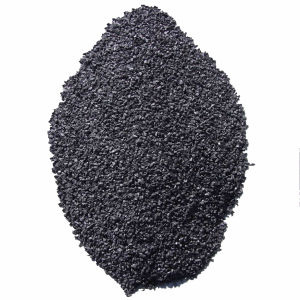
Cast Iron is a metal, which is manufactured by the process of reduction and melting. It is a ductile metal, with the properties of high strength, hardness, and brittleness. Generally, it is made up of carbon and silicon. It has a wide application in the industrial fields, such as construction, industry, transportation and so on.
In order to achieve the desired properties of cast iron, inoculants are used. These are alloys that increase the number of nucleation sites prior to solidification in molten cast iron. This increases the nucleation of graphite particles in the molten metal, which provides for more uniform distribution and the formation of a homogeneous structure. In addition, inoculants can prevent undercooling of the melt ('chilling') below the metastable eutectic temperature and reduce the risk of cracks.
The present invention relates to an inoculant alloy, based on ferrosilicon or silicon, for the manufacture of cast iron with lamellar, compact or spheroidal graphite, and to a process for its preparation. The inoculant alloy can be prepared industrially in a simple manner, just by introducing a barium and/or zirconium compound into the molten ferrosilicon or silicon.

When the alloy is melted, the metallic barium and/or zirconium compounds can be reduced by adding a reducing agent to them. The reducing agent, for example, can be calcium carbide or graphite. The weight ratio of barium and/or zirconium components to the reducing agent is dependent on the desired content of barium or zirconium metal in the inoculant alloy.
During the casting of a casting iron, inoculants are introduced to the melt, usually by injection into the ladle. This causes a rapid increase in the concentration of the inoculant and leads to an increase in the number of nucleation sites, which then accelerates solidification. The inoculants also improve the microstructure of the cast iron and make it more robust and resistant to damage.
Inoculants can be applied to gray cast iron, nodular cast iron, ductile cast iron and vermicular casting iron. In addition to the deoxidizing effects, they have strong spheroidizing and anti-recession capabilities, which can effectively suppress the tendency of cast iron to chill. They can also be used to reduce the nonmetallic inclusions and slag in the molten iron.
The inoculants have a very high oxidation resistance and are especially suitable for long-time deoxidizing, as they have the functions of desulfurization and dephosphorization. They are also able to spheroidize and anti-recession, which can greatly improve the machinability of the casting iron.
They can also be used to increase the spheroidal graphite amount in the cast iron, and can therefore be applied in the manufacture of a nodular or ductile casting iron. Inoculants can also be used to control the degree of cold and restrain the formation of carbide.
In addition to the above advantages, the inoculant alloy according to this invention can be particularly distinguished by its good suppression of the precipitation of carbide. This is due to the fact that the aluminum and calcium contents are very low in the inoculant alloy.

Write a Message